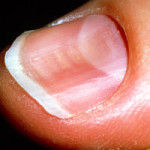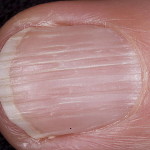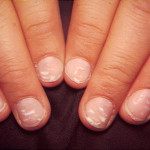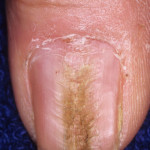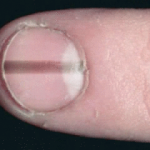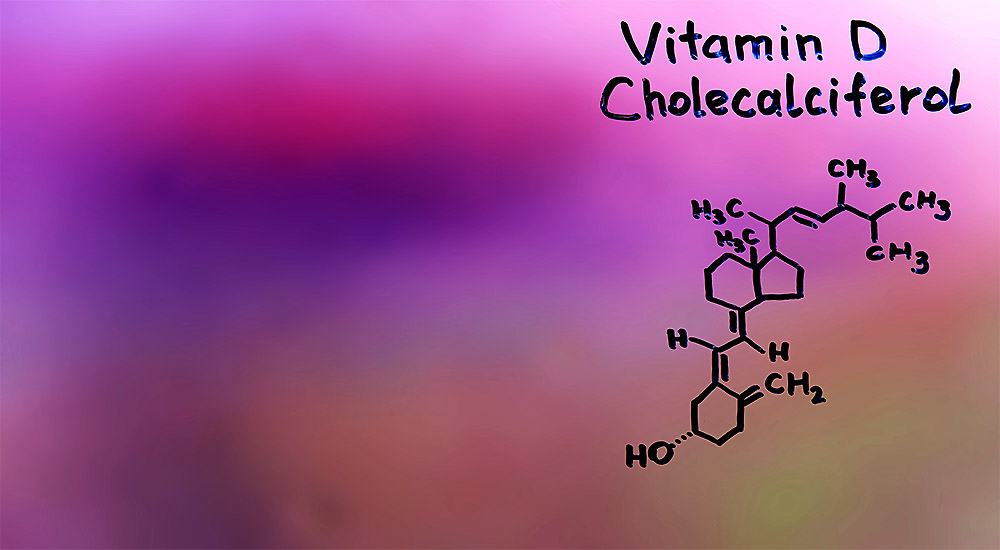Are You Nutritionally Deficient? Look at Your Nails!
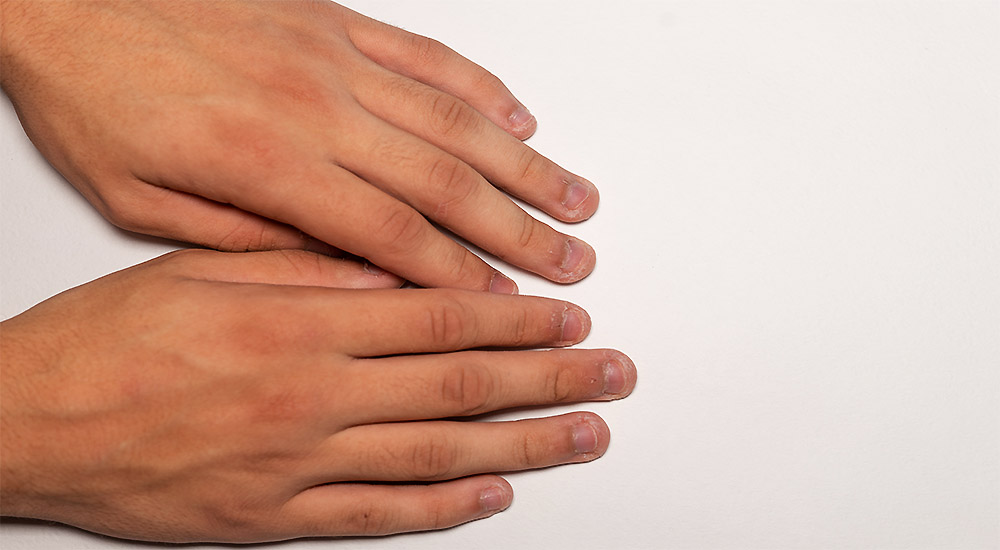
What Your Doctor Looks For
As doctors and clinical nutritionists here at Root Cause Medical Clinic, we learn to do a physical exam of our patients that includes simple, quick visuals of the patient’s hair, nails, skin, and eyes. And tongue…
Remember when your doctor asked you to stick out your tongue as a child? He or she wasn’t just looking at your tonsils, the doctor was also looking at the color, texture, and formation of the tongue and health of the gums.
Such tests are an important part of the physical exam but you can perform many of them right at home – for free! They give you valid evidence as to the nutritional status of your body.
Today we are going to discuss nails and what they say about your health. While nail changes aren’t the first indicator of a problem, they are a valid indicator of good or poor nutritional status. Because we live with our bodies 24/7, we likely have become accustomed to how certain parts of our body look and feel. Let’s take a fresh look at your nails and let’s see what they can tell you.
“Koilonychia”
The first condition is called koilonychia (kolo-nee-key-uh)– it means spoon nails. If you look at normal fingernails, they tend to bow outward a bit. With spoon nails the nail bed bows in the opposite direction of normal, inward like a spoon, to the degree, a few drops of water could sit in the “spoon” shape without spilling out. Spoon nails are a sign of mineral deficiency, specifically copper, zinc, or iron. Spoon nails are also associated with protein deficiency.
“Beau’s Lines”
Another nail deformity is Beau’s lines – these are deep horizontal grooves that travel from one side of the nail to the other. The grooves are deep enough to see with your eye and feel when you run your finger down the nail. Beau’s nails indicate low calcium or zinc deficiency.
Onychorrhexis
Onychorrhexis (oni-kor-exis) is a condition where the nails have lengthwise ridges and are brittle. These are often seen in the nails of the elderly who tend to have malabsorption issues. But regardless of age, their presence is never normal, most especially in the non-elderly individual. This condition indicated iron deficiency, or inadequate protein or folic acid in the diet.
Leukonychia
Leukonychia (loo-ko-nee-key-uh) is a condition of white marks on the nails. There are two types: 1) Punctata – these are white spots on the nails. 2) Striata – these are horizontal white lines across the nail bed. The spots are associated with a zinc deficiency. Lines are associated with a selenium deficiency.
Median Nail Dystrophy
Median nail dystrophy is a central groove along the midline of the nail. The groove is fairly deep, is found exactly in the midline of the nail vertically, and it tends to have small fissures radiating out from the groove. It’s hard to miss this particular type of nail disorder. It is associated with malnutrition.
Dark Lines Nails
Dark lines beneath the nail, running vertically down the nail, could be a sign of melanoma, the most dangerous type of skin cancer.
Yellow nails are frequently associated with fungus. These nails in addition to yellowing, also are thickened and tend to crumble. Very pale, whitish nails can be associated with anemia, heart or liver disease, and malnutrition.
Very white nails with dark rims are associated with liver disease.
Bluish nails are associated with conditions that are compromising oxygen flow to the body such as pneumonia or heart disease.
If you’re striving to take care of your health, your nails may be perfectly healthy. But with this knowledge, you can also observe the nails of your children, friends, and family. Some people just don’t go to doctors often. We’ve had patients arrive at our Root Cause Medical Clinic that couldn’t remember the last time they had a physical. It’s especially in these individuals that such nail conditions can be seen as they haven’t been caught earlier by regular examinations. And if you’re a woman who constantly has polished or artificial nails, it’s a good idea to let your nails ‘breathe’ occasionally and see what they look like.
If You’ve Noticed One of the Above Conditions, What Should You Do?
Other than the last four conditions that require immediate medical attention, you can begin by looking at your diet to see if there’s a missing component that has predisposed you to a mineral deficiency such as zinc or iron.
What Foods Improve Nail Disorders?
Let’s begin with sources of iron in food
• Red meat is definitely a source of iron, but not the healthy kind. Better to consider the plant protein options below:
• Nuts, including walnuts, cashews, pecans, and almonds
• Peanut butter
• Molasses
• Dried peas and beans
Zinc is found in meat and poultry, and vegetarian sources include:
• Pumpkin seeds
• Sesame seeds
• Bran
• Adzuki beans
It’s important to note that when it comes to zinc, pregnant and lactating women, along with vegetarians/vegans need to work a little harder to ensure they are getting adequate amounts. Vegetarians commonly eat a lot of legumes, seeds, nuts, beans, and whole grains that contain phytates that bind zinc (as well as iron) and inhibit its absorption in the body. This means vegetarians may require 50% more of the recommended daily allowance for zinc than non-vegetarians. Cooking or soaking these foods reduces the phytic acid content.
What is the Recommended Daily Allowance for Zinc?
For men 11 mg of elemental zinc, for women about 8 mg. Men should know that the human prostate accumulates the highest level of zinc of any soft tissue in the body. Cancerous prostate seems to have less zinc than normal prostates. A severe zinc deficiency can lower total testosterone and lead to impotence.
Pregnant women are also at increased risk of becoming zinc insufficient due to high fetal requirements for zinc. Breastfeeding can also deplete zinc in the body – so lactating women should aim for about 12 mg of zinc a day. Remember though, if a little is good, more is not better. Overdosing on zinc isn’t a good idea so try to keep zinc intake under the upper limit of 40 mg of elemental zinc per day. When discussing zinc dosages it can be confusing when you see how much zinc is on the label of your favorite multiple.
As an example, our Optimum Daily Allowance has 50 mg of zinc picolinate. That’s not 50 mg of elemental zinc which is what we are referring to above when we cite the daily allowance at 11 mg and 8 mg respectively. In a supplement, they have bound zinc to an acid such as picolinic acid, acetic acid, etc so assist the body in absorbing the mineral. Therefore when you see zinc picolinate or zinc gluconate in a dose of about 45-50 mg, you’re likely looking at about 15 mg of elemental zinc, the rest of the weight coming from the acid.
Here at Root Cause Medical Clinic, our zinc lozenge provides 15 mg of elemental zinc within 46 mg total of zinc aspartate. So don’t think you’re getting too much of the elemental mineral. It must be bound to acid to ensure (providing you have a healthy gut) absorption.
Where is Selenium is Found?
• Brazil nuts – Fun Fact! 1 brazil nut per day should get you all the selenium you need!
• Sunflower seeds
• Eggs
• Meat
What Foods Are Rich in Calcium?
While you may have mentally answered ‘dairy products’, that isn’t actually the case. While milk and its products contain calcium, it isn’t particularly absorbable for humans. We require an alkaline environment to absorb minerals well, including calcium. Dairy products (animal products in general) create a highly acidic environment making calcium absorption not only difficult, but the reverse tends to occur. Calcium is leached OUT of our bones when a high amount of dairy products is consumed. Countries with the highest dairy consumption have the highest rates of osteoporosis. Therefore, consider truly good sources of calcium including:
• Sesame seeds
• Almonds
• Beans
• Dark green leafy vegetables such as spinach, kale*, collards
• Sunflower seeds
• Sardines, if you’re eating animal products
What’s Next?
Now that you’ve looked at your nails and analyzed the best foods to provide healthy nails, how do you stand? Do you eat well and still have unhealthy nails? Is your diet ‘fair’ but you still see nail issues? The next step is to figure out why you aren’t absorbing the good food that you’re consuming. Unfortunately, just because good food enters your mouth, doesn’t mean that it gets absorbed by your cells. A healthy digestive tract is critical for that to occur and Americans typically suffer from poor digestive function. These can be caused by food sensitivities such as gluten or dairy, intake of drugs, chemicals, and pesticides.
Do you need help with your health?
We have the diagnostic and testing tools, the clinical experience, and a different medical approach to discovering the root cause of why you have the symptoms that are bothering you. As long as you are ready to make some dietary and lifestyle changes, we can help you. We will "hold your hand" through the changes, step by step, to make each step an easy one. We are located in Clearwater, FL, at 1000 S Ft Harrison, at the corner of Ft. Harrison Ave. and Magnolia St. There is plenty of parking space directly accessible from Ft Harrison. If it is not convenient for you to come to Root Cause Medical Clinic, we offer telehealth/telemedicine consultations to residents of certain states. Call us for details.
Contact us for a Consultation – Call 727-335-0400

Dr. Vikki Petersen DC. CCN
Founder of Root Cause Medical Clinic
Certified Functional Medicine Practitioner
Dr Vikki Petersen is a public speaker, author of two books, several eBooks and creates cutting edge content for her YouTube community. Dr Vikki is committed to bringing Root Cause Medicine and its unique approach to restoring health naturally to the world.
Ask a Doctor
Have a health concern you'd like to speak with a doctor about? Or just want clarity on a subject? Ask Us!

